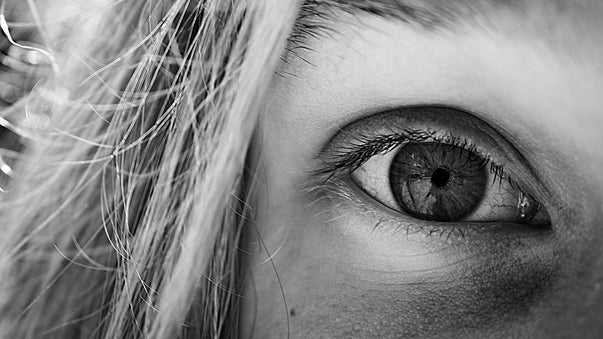Healthy and Active Aging is in the Mind

Welcome to this new issue of Pulse, your weekly newsletter focused on human enhancement today and tomorrow, brought to you by Thrivous!
A moment of silence and prayer before starting please. The oldest known person in the world, Italian Emma Morano, died at the age of 117. The secret of her longevity? Three eggs a day, she said, two of them raw, and never letting anyone dominate her.
Engineers at The University of Texas at Austin have developed the first all-solid-state battery cells that could lead to safer, faster-charging, longer-lasting rechargeable batteries for handheld mobile devices, electric cars and stationary energy storage. In a study published in Energy and Environmental Science, the engineers have shown that their new battery cells have at least three times as much energy density as today’s lithium-ion batteries.
Now wait a sec, you are thinking. Are you reading the right newsletter? Have I mixed things up (I am known for writing about lots of different things)? What does this have to do with human enhancement and longevity?
Well, the team leader is 94-year-old John Goodenough. Often proposed for a Nobel Prize for his contributions to the development of the the lithium-ion battery, Goodenough - featured in Steve LeVine’s best-seller "Powerhouse: America, China, and the Great Battery War" - is now trying to make a super-battery, one that will make electric cars truly competitive with combustion, and also economically store wind and solar power. Goodenough still goes to the lab every day, and is passionate about ending his career with a last, big invention.
And that is the reason for his being healthy and active at his age. Forget low-calorie diets, biotech drugs that lengthen telomeres, and even Emma Morano’s eggs, for those are useful but not the whole story. Healthy and active aging is more in the mind - focus the energy of your mind to something good that you are passionate about, and you’ll have a better chance to live longer and better. John Goodenough is more than good enough: he’s a hero, and he shows us the way. I hope he’ll live long enough to receive a deserved Nobel Prize.
Take an exercise pill and keep watching TV (not really). Researchers at Saint Louis University have made advances toward capturing the benefits of exercise in pill form, and received grants to further advance their work. Their research has been recently covered by Daily Mail and other popular news magazines with sensationalized headlines (“Exercise Pill!”) and fears that exercise pills will push people to abandon healthy outdoor walks and the gym to watch TV all day. But the researchers warn that no drug is likely to recreate all of the health benefits of exercise. At the same time, a pill could offer some of the benefits of exercise to people who are unable to exercise due to disability or ill health.
Longevity pill (someday). A review article published in Global Futurist covers ongoing and planned clinical trials of treatments for aging and age-related diseases developed by pharmaceutical biotech companies Novartis and Puretech, including a drug derived from a bacterium found on Easter Island, which has been shown to extend life in lab animals. The researchers are optimistic and confident but warn that demonstrating that a “longevity pill” works as intended is a long process and, as usual, regulatory approval takes time.
Artificial Intelligence for aging research. Insilico Medicine, a company that applies Artificial Intelligence (AI) to biotech, drug discovery, and aging research, has received funding from billionaire biotechnology investor Jim Mellon, often referred to as “the British Warren Buffett.” Mellow, who expressed confidence in the company’s potential to develop effective treatments for aging, recently outlined his vision for longevity at the Master Investor show in London.
The race to futuristic neurotech and brain implants. Tesla Motors and SpaceX creator Elon Musk has made headlines with his new company Neuralink, which plans to develop futuristic brain interfacing technologies dubbed “neural lace.” But other entrepreneurs are there as well. In August, self-made millionaire Bryan Johnson, who founded electronic payment company Braintree and sold it for $800 million to PayPal (then eBay) in 2013, also launched a visionary brain interfacing company, CNBC reports. Johnson's neurotech start-up, Kernel, is working to develop hardware chips designed to read and write neural code. The first applications will be therapeutic, but Johnson expects the technology to progress to the point where people can be enhanced with brain implants and become “superhuman.”
More and faster advances in brain interfacing neurotech. Other research teams are make advances toward the advanced neurotech applications envisioned by Johnson and Musk. The Wyss Center in Geneva, Switzerland, has launched a global neurotech innovation challenge to connect the human brain with the digital world. Neuroscientists at the University of California San Diego (UCSD) have developed nanowires that can record the electrical activity of neurons in fine detail. The research work, published in Nano Letters, show that the new nanowire technology is nondestructive and can simultaneously measure potential changes in multiple neurons with state-of-the-art sensitivity and resolution.
More Articles
Don't miss a beat! In our Pulse Newsletter, Thrivous curates the most important news on health science and human enhancement, so you can stay informed without wasting time on hype and trivia. It's part of the free Thrivous newsletter. Subscribe now to receive email about human enhancement, nootropics, and geroprotectors, as well as company news and deals.
Read more articles at Thrivous, the human enhancement company. You can browse recent articles in Thrivous Views. See other Pulse Newsletter articles. Or check out an article below.
-
Neural Lace and Telepathic Brain Implants
Welcome to this new issue of Pulse, your weekly newsletter focused on human enhancement today and tomorrow, brought to you ...
-
Medical Tourism for Genetic Life Extension
Welcome to this new issue of Pulse, your weekly newsletter focused on human enhancement today and tomorrow, brought to you ...


